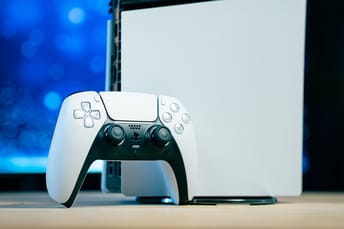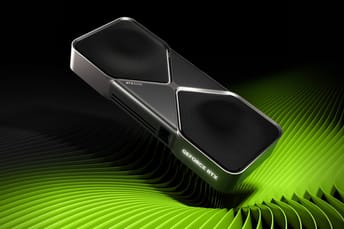
PSU Guide 2025: Wattage, ATX 3.1, Future-Proofing, Tips, and More
|
|
When a user admires the RGB backlight of the cooler or the sleek waterblock, the PSU is usually hidden somewhere at the bottom of the case. Meanwhile, it turns the unstable 110-240‑volt (depends on the country and household) sine wave of the household network into three perfectly stable voltage lines: +12 V, +5 V, and +3.3 V.
Without a reliable power source, the most expensive GPU can drop frequencies, and the motherboard can log a mysterious WHEA error. A weak or outdated unit manifests itself with sudden reboots in the middle of a game, a characteristic coil squeak, and accelerated electrolyte wear. In this guide, we will analyze:
- Why should you care about wattage, ATX 3.1 standards, 80 PLUS certificates, and more.
- How can we calculate power with a reserve for the future.
- Which elements inside the unit are responsible for reliability and silence.
- How to lay cables without bending the new 12V‑2×6.
- What protections save a PC from a short circuit.
- Tips on choosing the right PSU for your system and managing it properly.
What is a PSU, and what role does it play in your PC?
The PSU stands for power supply unit, it is a high-frequency inverter. At its core, the PSU takes the alternating current (AC) from your wall outlet and transforms it into low-voltage direct current (DC) that your PC components can actually use. This process isn’t as simple as flipping a switch—it involves multiple high-speed conversions and filtering steps to ensure your system receives stable power.
First, the incoming AC is rectified into approximately 310 volts of unregulated DC. Then, a high-frequency controller rapidly switches this voltage to feed a transformer. The transformer steps it down to safer levels, with the main rail being +12 V, which powers resource-intensive components (GPU and CPU).
From there, separate DC‑DC converter circuits create the +5 V and +3.3 V rails, used by SSDs, USB ports, and other parts. Finally, a network of coils, inductors, and film capacitors smooths out any residual ripple or electrical noise, ensuring the voltages are stable (typically within 0.1–5%, depending on the PSU’s quality, design, and certification). Modern high-end PSUs often use single-rail +12 V with DC-DC for +5 V/+3.3 V, but some multi-rail designs exist for safety.
Why is PSU work critical for your PC?
- GPU and CPU depend on +12 V. If the voltage drops to 11.4 V, the video card will reset the frequency, and the processor will lose stable boost.
- SSD and USB are sitting at +5 V/+3.3 V. Drawdowns cause write errors and external drives to fall off.
- Pulsation harness VRM. Every extra hundredth of a volt is converted into heat, raising the temperature of the power chokes.
- A good PSU keeps +12 V within ±1% or lower, even with a sharp transition from the menu to gameplay; a budget unit allows ±5%, and this is already visible in benchmarks as microfreezes.
Without this careful and continuous conversion, your PC wouldn’t just crash—it could suffer long-term damage from unstable voltage or sudden power spikes. That’s why the PSU is a critical component of your rig. It doesn’t render frames or process data directly, but quietly powers everything that does. Its role may seem passive, but without clean and stable power, even the best CPU or GPU can’t perform at their full potential.
Strength and Effectiveness of a PSU—Watts and Certificates
How to calculate the power needed
You can use a simple formula:
- Add up the nominal TDP of your processor and graphics card.
- Add 30-100+ watts to cover everything else connected to your PC inside or outside: motherboard, RAM, SSDs, fans, AIO pump (if present), mouse and keyboard, etc.
- Multiply the amount by a factor of 1.3—this is a 30% margin for power spikes, CPU’s boost tech, and possible future upgrades.
For example, the Ryzen 7 7800X3D—120 W + RTX 4070 Super—220 W gives 340 W. We add another 60 watts for peripherals—400 W. 30% margin—520 W. The optimal choice is a 750-800 watt PSU. Why more than the math says? It will operate at ±60% load, wear out more slowly, be cooler, and remain quiet.
80 PLUS certification
The 80 PLUS program rates PSUs by their energy efficiency. The higher the rating, the less power is wasted in the form of heat energy, and the cooler and quieter your system will run.
- White—the old baseline, 80% efficiency under typical loads; heats up and makes noise.
- Bronze—around 82-85% at 50% load, usually found in entry-level or office PCs.
- Silver—±88%, quite rare on the market, most users skip this in favor of Gold for better value.
- Gold—90% efficiency, optimum for gaming PCs: quieter, saves a lot of energy per year, less heat.
- Platinum—±92%, ideal for smaller PC cases or hotter climates.
- Titanium—over 94%, additionally tested for efficiency even at 10% load, overkill for most users unless running 24/7 workloads.
It is important to remember that the 80 PLUS sticker guarantees minimal efficiency, but not the quality of the unit. The two Gold models may differ in cooler, durability, and other specs. Likewise, a Bronze model from a reputable brand can outperform a poorly made Gold unit, depending on platform, components, and overall engineering.

What’s Changed in Modern PSUs
- Peak power spikes. The ATX 3.1 standard requires the PSU to withstand up to 200% of its rated power for 100 milliseconds—a stress test designed to handle the explosive Boost transients of modern GPUs.
- 12VHPWR becomes 12V‑2×6. The new connector features shorter signal pins and stronger spring contacts. The ATX 3.1/PCIe 5.1 Ready marking ensures proper load tolerance and greatly reduces the risk of thermal damage.
- Dual cables for 1000 W+ units. High-end PSUs now come with two 12V‑2×6 connectors, allowing SLI-like or dual-GPU setups without additional adapters.
- Hold-up time extended to 17 ms. If electricity flickers, your PC won’t crash mid-game—the PSU will continue delivering stable power from its capacitors.
- Stricter ripple limits. The +12 V rail must remain within ±0.5%, significantly lowering the risk of coil noise during high workloads.
- USB-PD up to 240 W. The front-panel USB Type-C can now fast-charge laptops or handhelds without affecting system stability or drawing down the main power rails.
- PMBus telemetry. Monitoring tools (HWiNFO and similar) can display real-time wattage, connector temperature, and fan speed, while various apps and drivers allow custom fan curves and profiles.
- ATX12VO 2.2 compatibility. In SFF builds, only +12 V is supplied to the motherboard—all other voltages are regulated locally. Modern ATX 3.1 PSUs are designed to handle both traditional and next-gen wiring layouts.
In short, by choosing an ATX 3.1-certified PSU today, you future-proof your system for the rest of the decade.
What’s Inside a PSU
Here’s what to look at when checking technical specs or reading reviews.
- Capacitors. Brands like Nippon Chemi‑Con, Rubycon, Nichicon, and Panasonic are rated for 105 °C and thousands of hours of stable operation. Teapo and CapXon are mid-tier (typically 85 °C-rated), while generic no-name capacitors are a gamble.
- Topology. A PSU’s internal design greatly affects its efficiency and stability. The modern gold standard is LLC resonance with DC‑DC conversion, which ensures tight voltage regulation and low ripple. Cheaper designs like Double Forward or group regulation are still common in Bronze-tier units, but they tend to run hotter and respond more slowly to worldload changes.
- MOSFETs. Look for low Rds(on) transistors (< 3 mΩ), ideally thermally protected. Some high-end models even use SiC modules, which reduce heat during sudden current spikes.
- Cooling. Heatsinks with increased surface area, 1 mm thermal pads, and a fluid dynamic bearing (FDB) fan rated for 100,000 hours all contribute to quiet, long-term operation.
- Filtering. High-quality film capacitors and ferrite chokes help reduce coil whine, especially on modern GPUs.
- Protection circuits. A reliable unit should include OVP, UVP, OCP, SCP, OTP, and OPP — all six protections are essential for hardware safety. More info on protection in the next chapters.
All these things can’t be seen during unpacking, but after five or more years, a high-quality PSU will still be quiet, and a cheap one will already make noises and can fry the SSD during a power surge. In my personal experience, I built my previous rig in 2016 and used it till 2025. During this time, I swapped the motherboard, changed the CPU once and GPUs twice, changed 2 sets of RAM, added SSDs, and changed HDDs. I never had to change PSU (it cost me around 190$), and in 9 years I only had to change one capacitor once.
PSU Form Factor and Cable Management
- Form factors. Standard ATX units (typically 140-150 mm long) fit most mid-tower cases. More compact PC cases may require SFX-L (130 mm), while Flex‑ATX is reserved for ultra-compact or rackmount setups.
- Modularity. Fully modular PSUs let you connect only the cables you need, improving airflow and making installation cleaner and easier. Semi-modular designs leave the 24‑pin and EPS cables hardwired, which is perfectly fine if your case has good cable routing behind the motherboard tray.
- 12V‑2×6 L‑adapters. A welcome innovation, these right-angle adapters route the thick GPU power cable downward, avoiding stress on the connector and keeping it from pressing against the tempered glass side panel.
- Nylon extensions. Thicker than stock cables, but ideal for combed layouts and color-coordinated builds. They also help shape tidy curves along cable channels.
- Airflow tips. Face the PSU fan toward the lower intake if your case has a dust filter. Avoid sharp bends right after the 12V‑2×6 plug (keep a minimum bend radius of 3 cm). Make sure cable bundles don’t block the GPU tunnel or airflow from case fans.
Good cable management not only looks good, but also makes cleaning easier and can reduce internal temperature by a couple of degrees.

Practical PSU Examples for Builds at Different Quality
Average 1080p gaming rig
- CPU: Intel Core i5‑14600KF (125 W)
- GPU: Radeon RX 7600 XT (165 W)
- Estimated system load: 320 W
- Peripherals and extras: +30 W—350 W total
- With 30% headroom: 465 W
- Recommended PSU: 650 W ATX 3.1 Gold
This PSU will run at around 60% load, staying quiet and cool, while leaving room for a future GPU upgrade.
QHD 144 Hz performance build
- CPU: AMD Ryzen 7 7800X3D (120 W)
- GPU: RTX 4070 Ti SUPER (285 W)
- Load estimate: 405 W
- Extras: +50 W—455 W
- 30% headroom: around 600 W
- Recommended PSU: 850 W Gold or Platinum ATX 3.1
Offers a native 12V‑2×6 connector, excellent efficiency, and headroom for overclocking or future CPU upgrades.
4K Ultra high-end expensive setup
- CPU: AMD Ryzen 7900X3D (120 W)
- GPU: RTX 5090 (575 W)
- Combined load: 695 W
- With peripherals: +100 W—795 W
- +30% + transient margin: 1000-1100 W continuous, up to 1600 W peak
- Recommended PSU: 1600 W Titanium ATX 3.1 with dual 12V‑2×6
Runs at 50-60% in normal gaming workloads, stays nearly silent, and is fully ready for additional upgrades.
PSU Protection and Smart Monitoring
Here are the key protections built into modern PSUs:
- Over‑current protection (OCP)—cuts the line when there is an excess of current; saves the fan from short-circuiting.
- Over‑/under‑voltage protection (OVP/UVP)—turns off the unit at ±20% surges, protects the SSD.
- Over‑temperature protection (OTP)—stops the unit at 100 °C if the filter is clogged with dust.
- Short‑circuit protection (SCP)—the reaction is instantaneous, even before the OS is launched.
- Over‑power protection (OPP)—will shut down the unit if the load exceeds ~120% of the nominal value.
How to monitor the PSU
- AIDA64 or HWiNFO shows the real consumption, the temperature of the internal temperature sensor, and the fan speed from the PMBus.
- Corsair iCUE, MSI Center, and ASUS Armoury Crate allow you to set your own rotation curve or quiet mode for up to 60% load.
- OCCT Power will detect in 20 minutes whether +12 V and +5 V are kept within ±1%.
- CSV logs will help you understand how the voltage drops when you stream, render, and record clips at the same time.
A single voltage graph in the AIDA64 or OCCT will tell you more about the quality of the unit than any marketing sticker.

Summary
The PSU is the one component that can outlast a few full PC upgrades. In 2025, the minimum for an average gamer looks like this: ATX 3.1, 80 PLUS Gold certified, with a minimum of 30% power reserve for stable work and a possibility of future upgrades.
A good PSU will:
- Deliver stable FPS without reboots or microfreezes.
- Save a bit of money on electricity over the years thanks to high efficiency.
- Run quieter.
- Protect your components from surges, drops, and short circuits.
To keep it performing at its best, clean the PSU with compressed air every six months, holding the fan blades in place to prevent spinning. Once a year, run a test with OCCT Power or a hardware load tester to check voltage stability under stress.
PSU is the foundation of your entire rig—don’t skimp on it. One reliable PSU is enough to power your PC through the years and multiple upgrades.



